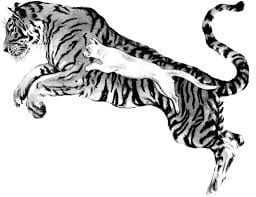“How did the discovery of DNA prove that Darwin’s theory of evolution was correct, and how does it change the way we view evolution today and into the future?”

It has been over 150 years ever since Charles Darwin revealed his wondrous theory to the world. Since then, society has grown in leaps and bounds, notably in the fields of science. During the 19th century, environmental science and different intellectual opinions were not as appreciated as they are now. Due to advancements in technology and culture, Darwin’s theory of evolution has had a resurgence of new light in education.
Most marine mammals have been so highly modified by evolution that they bear little resemblance to their ancestors. The otter is an example of this. Elements of their anatomy evolved as well to help them survive both on land and in the water. This includes their lung capacity and flippers. As their lungs improved, they were able to start diving for food instead of foraging for it on the surface of the water. The complete evolution process for Otters is still full of mystery. While there is great evidence to base the information on, many of the final pieces to the puzzle are missing.

Domestic cats are prime examples of how evolution can improve (in my personal, cat biased opinion.) A study published in the research journal Science declared that all domestic cats descended from a Middle Eastern wildcat, Felis sylvestris. Cats were first domesticated up to 12,000 years ago.
The dawn of genetics is the most important thing to happen to the study of evolutionary biology, since Darwin’s theory first appeared. Because DNA is universal to all life, its presence strongly suggests that all creatures on Earth evolved from a common ancestor. DNA also explains how the expanding of genetic mutations (combined with the processes of natural selection) enables evolution to happen. Ultimately, DNA is the engine that drives evolution. It’s an elegant, sometimes savage like process that doesn’t require a helping hand from anything. Not even species! Species come and go and come again, but life goes on. There are fossils dating back billions upon billions of years. They are strings of continuity used by biologists to study the (interconnected) advancement made by species, as they change over time.
The immediate reaction from the public upon publication of On the Origin of Species by Means of Natural Selection was mixed. Some were accepting, others not so much. His theory shifted society’s thinking on human life; the right to it was no longer based on religious ideals. His was a secular point of view, if you must. As the world lived on, this opinion gradually shifted. Wars, culture shifts, and economic shifts played a role in this. Sure, there are still those who believe life evolved from religion. Though they are few and far between, as their numbers have greatly decreased.
There are more than 200 types of owls, also known as Strigiformes, in existence today. Owls, for the most part, are nocturnal animals which means they are only really active after dark. Adaptations are highly similar, though remain unique to whatever environment they live in. For instance, the ability to camouflage into surroundings as well as fly silently is a special characteristics. In further detail, to fly silently means that owls need a unique feather and wing structure, along with flexibility. Blending into surroundings is used to hide, hunt, and stalk.

During the 20th century, it provided new insights into major diseases and enabled an integrated understanding of human biology and medicine. Thus, personalized treatment was born. The raw gravity of Darwins theory kicked into gear when the effects of the Industrial Revolution/ human activity were recognized. Lower life expectancy, rare disorders, and animals going extinct in high statistics are all continuous signs that his theory still rings true today, and in the future.
With evolution, it became possible to demonstrate that we are indeed all the same, and skin colour is just a genetic feature that allows people to survive better.
